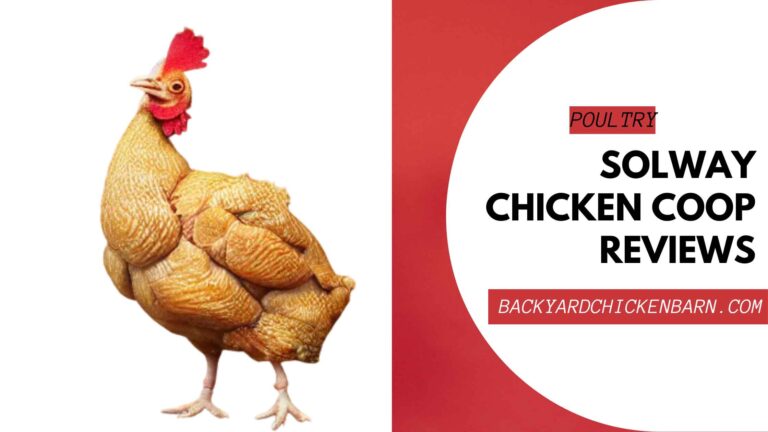Chicken Laws by County in Iowa
Raising backyard chickens in Iowa is a popular choice for families, homesteaders, and hobby farmers alike. With the state’s deep agricultural roots, you might think chickens are universally allowed—but the truth is, chicken laws in Iowa vary by county, city, and zoning district.
This guide breaks down chicken laws by county in Iowa, helping you understand what’s allowed where—so you can build your coop, raise your flock, and collect fresh eggs legally and responsibly.
Are Backyard Chickens Legal in Iowa?
Yes, chickens are legal in Iowa, but there are no statewide rules for keeping them. Instead, each county and city sets its own regulations, often based on:
-
Zoning classifications (residential, agricultural, rural)
-
Lot size and housing density
-
Allowed number of hens
-
Rooster bans
-
Coop placement and sanitation rules
-
Permitting requirements
Whether you live in Des Moines, Cedar Rapids, or rural Jasper County, you’ll need to check your local ordinances before bringing home your flock.
For planning your coop size and space, use this chicken coop calculator to ensure your setup is both comfortable and compliant.
Chicken Laws by County and Major Cities in Iowa
Let’s go county by county and highlight local regulations in cities and rural zones across Iowa.
Polk County (Including Des Moines)
Are chickens allowed in Des Moines?
Yes, with strict regulations.
-
Up to 30 birds allowed, including hens and chicks
-
Roosters are not allowed
-
Coops must be:
-
Located at least 25 feet from any dwelling
-
In the rear yard
-
Kept clean and odor-free
-
-
Annual permit required ($50 for up to 30 birds)
-
Chickens must be confined to a coop or run and not free-range
Des Moines allows more hens than most cities but expects excellent sanitation and compliance.
Linn County (Including Cedar Rapids)
Cedar Rapids chicken ordinance:
-
Up to 6 hens
-
No roosters allowed
-
Coop and run must be:
-
10 feet from property lines
-
Secure and enclosed
-
Clean and free of odor
-
-
$25 permit required for backyard flocks
-
Chickens must not be a nuisance to neighbors
In unincorporated Linn County, residents in agricultural zones can keep larger flocks with more freedom.
Scott County (Including Davenport)
-
Davenport allows:
-
Up to 6 hens
-
No roosters
-
Coops must be:
-
In the rear yard
-
10–20 feet from other homes
-
Regularly cleaned
-
-
Permit may be required for first-time applicants
-
-
Rural areas in Scott County offer more flexibility:
-
Roosters are allowed in agricultural zones
-
No specific hen limits outside city limits
-
Johnson County (Including Iowa City, Coralville)
-
Iowa City permits:
-
Up to 4 hens
-
Roosters banned
-
Coop must be in the rear yard, at least 25 feet from any adjacent dwelling
-
$50 annual permit required
-
Must pass inspection prior to approval
-
-
Coralville follows similar rules, with a limit of 6 hens
-
Unincorporated areas and AG zones in Johnson County are more relaxed, allowing roosters and larger flocks
Black Hawk County (Including Waterloo, Cedar Falls)
-
Waterloo allows:
-
Up to 6 hens
-
No roosters
-
Coop must be:
-
20 feet from neighboring homes
-
In rear yard
-
Secure and clean
-
-
Chickens must be confined at all times
-
-
Cedar Falls has a similar ordinance, but some neighborhoods may have stricter HOA rules
-
Rural parts of the county are more lenient
Story County (Including Ames)
-
Ames chicken laws:
-
Up to 6 hens
-
Roosters banned
-
Coop requirements:
-
10 feet from property lines
-
Rear yard placement
-
Clean and well-ventilated
-
-
No permit required for personal use flocks
-
Unincorporated Story County allows roosters and larger flocks, especially in rural or AG-designated zones.
Pottawattamie County (Including Council Bluffs)
-
Council Bluffs:
-
Up to 10 hens
-
Roosters prohibited
-
Coop must be:
-
Located in the rear yard
-
30 feet from neighboring homes
-
Enclosed and pest-free
-
-
-
Outside the city, the county allows more leniency:
-
Larger flocks in AG zones
-
Roosters allowed with proper containment
-
Dubuque County (Including Dubuque City)
-
Dubuque permits:
-
Up to 6 hens
-
No roosters
-
Coop and run must:
-
Be kept clean
-
Be 15 feet from neighboring homes
-
Not pose a nuisance
-
-
$20 annual permit required for residential poultry
-
Unincorporated zones typically allow chickens under standard zoning guidelines without a permit.
Woodbury County (Including Sioux City)
-
Sioux City chicken rules:
-
Up to 8 hens
-
Roosters banned in residential zones
-
Coop must be:
-
In rear yard
-
At least 20 feet from any structure not owned by you
-
Regularly cleaned
-
-
Permit may be required if flock size exceeds the limit
-
In unincorporated Woodbury County, residents have more freedom, including keeping roosters.
Common Chicken Laws Across Iowa Cities
While there’s no uniform standard, most Iowa municipalities share similar chicken-keeping rules:
| Rule | Typical Requirement |
|---|---|
| Roosters | Banned in urban/residential zones |
| Hen Limit | 4–10 hens depending on zoning |
| Setbacks | 10–30 feet from homes or property lines |
| Permits | Often required in cities ($20–$50/year) |
| Cleanliness | Coops must be odor-free, enclosed, and pest-controlled |
| Containment | Birds must be fenced or cooped at all times |
To help you meet both your birds’ needs and local ordinances, try this chicken coop calculator and map out the perfect coop.
Urban vs. Rural Chicken Laws in Iowa
Urban/Suburban Areas (e.g., Des Moines, Cedar Rapids, Davenport):
-
Limit of 4–6 hens is common
-
Roosters are usually prohibited
-
Permits required
-
Coop placement strictly enforced
-
HOA restrictions may override city laws
Rural/Unincorporated Zones:
-
Roosters and larger flocks allowed
-
Few or no permit requirements
-
More relaxed rules on coop size and placement
-
Ideal for homesteading and hobby farms
How to Find Chicken Laws for Your Property
Follow these steps to confirm the chicken laws that apply to you:
-
Identify your zoning classification using your city or county’s zoning map
-
Check your local municipal or county ordinance online
-
Call your local planning/zoning office for clarification
-
Review HOA or neighborhood covenants, if applicable
Just because your neighbor has chickens doesn’t mean you can legally keep them too—zoning laws can vary by block.
Building a Legal and Healthy Chicken Coop
Here’s what a legal and chicken-friendly coop looks like:
-
4 sq. ft. of indoor space per hen
-
8–10 sq. ft. in the outdoor run per bird
-
Proper ventilation, shade, and predator protection
-
10–30 ft setbacks, depending on your city’s code
-
Clean, secure, and odor-free conditions
Need help planning it? Use the chicken coop calculator to design a coop that keeps both your hens and your city officials happy.
Conclusion
Iowa is one of the most chicken-friendly states in the Midwest, but that doesn’t mean you can wing it. Each city and county sets its own backyard chicken rules, and it’s your job to understand them before you build a coop or buy your first hen.
Whether you live in a big city like Des Moines or a quiet corner of Johnson County, check your ordinances, follow the rules, and plan your space carefully.
Ready to build your dream coop? Use this chicken coop calculator to get started—it’s the easiest way to stay legal and keep your flock comfortable.
Backyard chickens aren’t just a trend in Iowa—they’re a way of life. Just make sure you’re doing it by the book.


